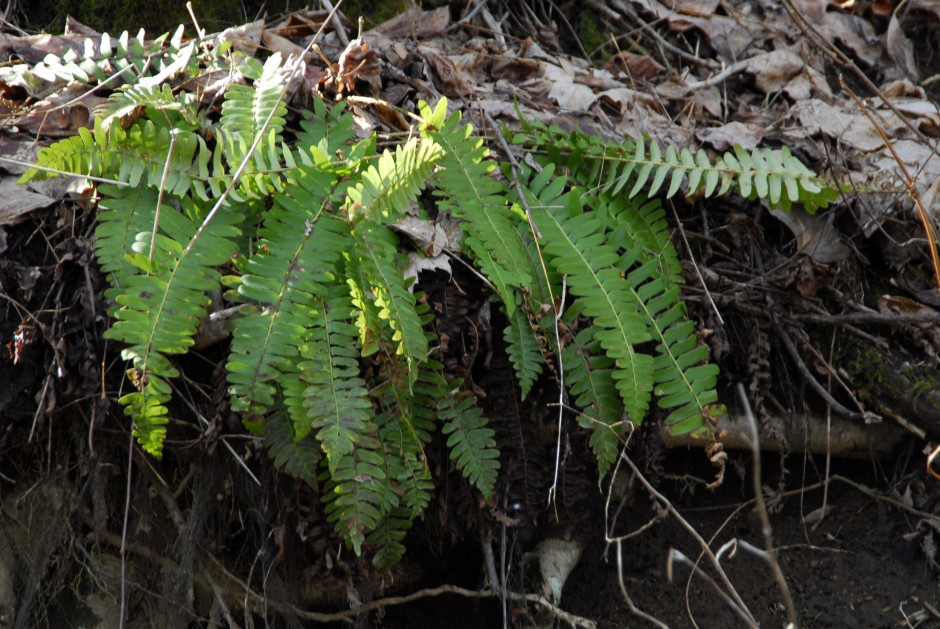What a better time than now to insert Polystichum acrostichoides, the Christmas fern, into this blog about native plants.
Most of our attention with native plants which we either introduce into our garden or simply enjoy in hikes through the region is devoted to flowering plants. But ferns abound in the Nantahala area and knowing a little more about them helps us decide whether to invite them into the garden. Some ferns can be quite invasive and unpredictable and they are best not brought into flower beds, but others, like the Christmas fern do make a fine addition to the garden.
With the abundance of greenery during spring and summer and even into fall, Polystichum acrostichoides is rather taken for granted, but oh, in the winter when there is little greenery one does take notice.
The fern droops a bit, but it is there, dotting the wood’s landscape
or draping itself elegantly on bluffs, as in the photograph above.
I had noticed ferns but, quite frankly, taken them totally for granted. A friend wanted to know if we had a certain fern in the area and I was embarrassed to realize that I had grouped them all together as “ferns” not noticing their individual characteristics. So, I bought a Peterson Field Guide on Ferns, and began to identify the 10 species of ferns which we have on the property and environs.
I found that it was helpful to become familiar with fern terminology as it helped in identifying them. We see a fern, and I suppose we think they have leaves – it is best to think of “leaves” as fronds.
Ferns, of course, don’t have flowers that turn into seeds. Instead, they reproduce with spores. These spores are grouped in clusters. One cluster is a sorus, but since there is typically more than one spore cluster, we notice the fern’s sori (plural for sorus) as their placement is one of the ways of identifying ferns.
The frond begins with a stem called stipe which is like a petiole in a flowering plant. Then the blade begins, with a rachis in the middle, which is really simply the continuation of the line established by the stipe, with pinnae on either side.
It is has been fun for me to try to identify the ferns in the area, many of which look very much alike, and then again, some of them with very interesting deviations in what we normally think of as a “classic” fern. I think the Christmas fern looks very much like what I would call a “typical”, or a “classic” fern with fronds coming up from a rhizome and radiating forth from a central place. Not all of the ferns around Nantahala are so shaped, and we will get to know them one by one.
But, it does help to know the lingo when it comes to ferns – especially the terms sori because just where one finds the spores is a tell-tale sign in identification, and also, the term pinnae – because sometimes their configuration is crucial in identifying a fern.
The Christmas fern is an evergreen, but the fronds do wilt and die and in the spring fiddleheads appear.
Although because Christmas fern is an evergreen and found in winter and thus easy to identify, it is interesting to notice it a bit more.
The midsection of the blade (rachis) is scaly
The pinnae have a little blurb, a little lobe at the base.
The sori (spore clusters) are dense and only appear in the upper part of the blade.
Sori only appear on the upper half of the blade and the fertile pinnae are smaller.
Christmas fern transplants beautifully. Another plus is that the plant stays put and simply gets larger and prettier with age (like we all do!). The plant does best in shade or filtered light and enjoys moisture.
Check out these links:







